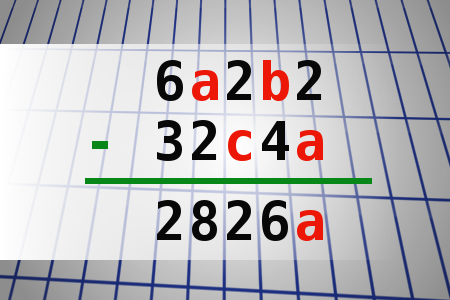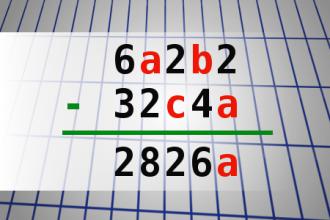Find number abc
If 6a2b2 - 32c4a = 2826a find number abc. Multiple solutions may exist.Correct answers: 42
The first user who solved this task is On On Lunarbasil.
#brainteasers #math

A husband and wife are moving...
A husband and wife are moving out of their house and are starting to box everything up. The husband finds a box under the bed, pulls it out, and looks inside, where he finds two eggs and about $8,000. He approaches the wife and asks, "What are the eggs for?" She replies, "Every time I cheat on you, I put an egg in the box." He says, "That's alright, you've only cheated on me twice. What's the money for?" The wife replies, "Every time I get a dozen, I sell them!"

